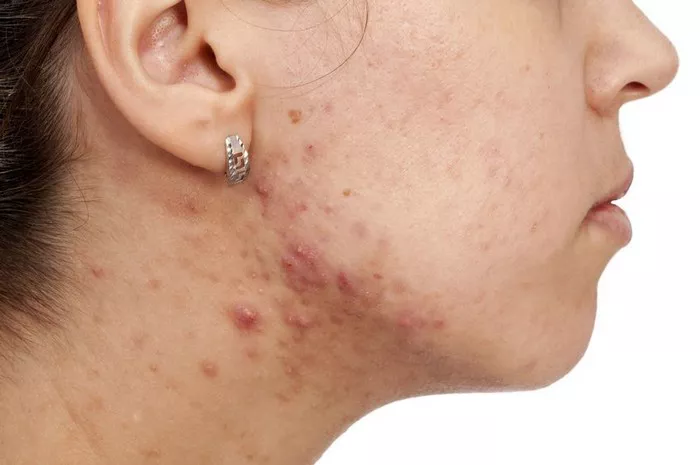Hidradenitis suppurativa (HS) is a chronic skin condition that affects many people worldwide. Understanding how it develops can help in managing and treating the condition. This article will explore the causes, risk factors, and potential triggers of hidradenitis suppurativa.
What is Hidradenitis Suppurativa?
Hidradenitis suppurativa is characterized by painful lumps, abscesses, and scarring in areas where skin rubs together, such as the armpits, groin, and under the breasts. These lumps can become inflamed and can drain pus, leading to discomfort and irritation. The condition can be chronic, with flare-ups that come and go.
Causes of Hidradenitis Suppurativa
The exact cause of hidradenitis suppurativa is not fully understood. However, it is believed to involve a combination of genetic, environmental, and lifestyle factors.
1. Genetic Factors
Research suggests that hidradenitis suppurativa has a hereditary component. If someone in your family has HS, your risk of developing the condition increases. Genetic mutations that affect skin and immune function may play a role in the development of HS.
2. Immune System Dysfunction
Hidradenitis suppurativa is associated with an abnormal immune response. In HS, the body may mistakenly attack its own skin cells, leading to inflammation and the development of painful lumps. This immune dysregulation may contribute to the severity and frequency of flare-ups.
3. Skin Follicle Blockage
The condition often starts when hair follicles become blocked. This blockage can lead to inflammation and the formation of painful bumps. Follicular occlusion is a common characteristic in many cases of HS. Factors contributing to follicular blockage include:
- Excessive sweating
- Friction from clothing
- Skin irritation
4. Hormonal Factors
Hormones may also play a significant role in the development of hidradenitis suppurativa. Many patients report flare-ups related to hormonal changes, such as those that occur during menstruation. The condition is more common in women, suggesting that estrogen and other hormones may influence its development.
Risk Factors for Hidradenitis Suppurativa
Certain factors can increase the likelihood of developing hidradenitis suppurativa. Understanding these risk factors can help individuals take preventive measures.
1. Obesity
Obesity is a significant risk factor for HS. Extra weight can lead to more friction in skin folds, increasing the likelihood of blocked follicles and inflammation. Maintaining a healthy weight may help reduce the risk of developing HS or lessen the severity of existing symptoms.
2. Smoking
Smoking has been linked to a higher incidence of hidradenitis suppurativa. The toxins in tobacco can affect skin health and immune function. Quitting smoking can potentially improve symptoms and reduce the frequency of flare-ups.
3. Age
Hidradenitis suppurativa typically begins after puberty and often appears in young adulthood. It is less common in older adults. The peak age of onset is usually between 20 and 30 years old.
4. Gender
HS is more prevalent in women than men. Hormonal factors and genetic predispositions may contribute to this difference. Women are also more likely to experience flare-ups related to menstrual cycles.
5. Other Medical Conditions
Certain conditions can increase the risk of developing hidradenitis suppurativa. These include:
- Inflammatory bowel disease (IBD)
- Metabolic syndrome
- Acne inversa
- Psoriasis
People with these conditions may experience a higher incidence of HS due to shared inflammatory pathways.
Triggers of Hidradenitis Suppurativa
While the underlying causes of hidradenitis suppurativa may be complex, various triggers can lead to flare-ups. Identifying and managing these triggers can help in controlling symptoms.
1. Friction and Sweat
Friction from skin-to-skin contact or tight clothing can irritate the skin and trigger flare-ups. Areas that are prone to sweating, such as the armpits and groin, are particularly vulnerable. Keeping these areas dry and using loose-fitting clothing may help reduce irritation.
2. Stress
Stress can negatively impact overall health and trigger inflammatory responses in the body. Individuals with HS may find that emotional or physical stress can lead to flare-ups. Practicing stress management techniques, such as meditation or yoga, can be beneficial.
3. Diet
Some people report that certain foods can trigger their HS symptoms. Common culprits include:
- Dairy products
- High-glycemic index foods (like white bread and sugary snacks)
- Processed foods
A balanced diet rich in whole foods, fruits, and vegetables may help improve skin health and reduce flare-ups.
4. Infections
Infections in the affected areas can exacerbate hidradenitis suppurativa symptoms. Keeping the skin clean and treating any infections promptly can help manage the condition.
5. Hormonal Changes
As mentioned earlier, hormonal fluctuations can influence the severity and frequency of HS flare-ups. Women may notice increased symptoms during their menstrual cycles or during pregnancy. Hormonal treatments may be an option for some patients to help regulate symptoms.
Managing Hidradenitis Suppurativa
While there is currently no cure for hidradenitis suppurativa, various management strategies can help reduce symptoms and improve quality of life.
1. Medical Treatments
Treatment options for HS vary based on severity. Common approaches include:
Topical treatments: Antibiotic ointments and anti-inflammatory creams can help manage mild cases.
Oral medications: Antibiotics, corticosteroids, and biologics may be prescribed for more severe cases.
Surgery: In some instances, surgical removal of affected areas may be necessary to relieve symptoms.
2. Lifestyle Changes
Making lifestyle modifications can significantly impact the management of HS. Consider the following strategies:
Maintain a healthy weight: Losing excess weight can reduce friction and the likelihood of flare-ups.
Practice good hygiene: Keeping affected areas clean and dry is crucial for managing symptoms.
Wear breathable clothing: Opt for loose, breathable fabrics to minimize skin irritation.
3. Support Networks
Connecting with others who have hidradenitis suppurativa can provide emotional support and practical tips for managing the condition. Support groups, both online and in-person, can be valuable resources for sharing experiences and coping strategies.
Conclusion
Hidradenitis suppurativa is a complex condition with various causes and triggers. While the exact reason for its development remains unclear, understanding the factors that contribute to HS can empower individuals to manage their symptoms more effectively. By recognizing risk factors, avoiding triggers, and seeking appropriate treatment, those with hidradenitis suppurativa can lead fulfilling lives. If you suspect you have HS or are experiencing symptoms, consult a healthcare professional for a proper diagnosis and personalized treatment plan.
Related topics:


























